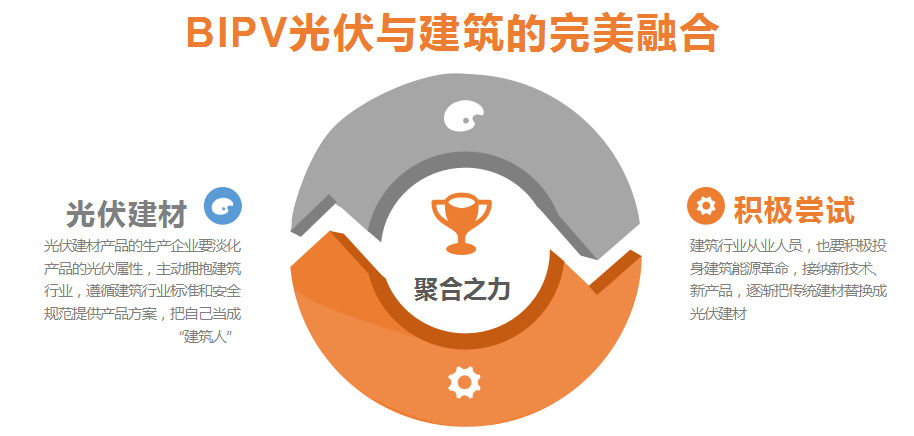The separation of modern building support system and maintenance system makes solar panels become the veneer material of building external enclosure system like prefabricated panels such as wood, metal, stone and concrete.
In addition to the power generation function, the photovoltaic building system also has the necessary performance and unique decoration function of building envelope, such as wind pressure resistance, water tightness, air tightness, sound insulation, heat preservation and sun shading.
Source: global PV [announcement] the official account collects, summarizes, and studies BIPV photovoltaic building integrated information in the industry to share with the public without commercial use.
The module is composed of a solar cell chip and a double-layer glass plate.

Photovoltaic curtain wall is a common way of photovoltaic wall integration.
One is to use the components with good waterproof performance as the waterproof structural part of the roof, and the other is to install them separately on the waterproof layer, which can protect the roof from water and prolong the service life of the waterproof layer.
There are two ways to construct the solar panel and the roof.
The chip is sandwiched between the glass plates.
At present, the forms of BIPV applied to practical buildings mainly include the combination or integration of photovoltaic modules and roof, photovoltaic module curtain wall, photovoltaic module daylighting window, photovoltaic module sunshade, photovoltaic module and LED combined or integrated curtain wall, sky curtain and so on.
Architecture refers to a part of a building, not just a building space.
Solar photovoltaic building integration (BIPV) technology is a technology that integrates or combines solar power generation products into buildings.
It can effectively solve the shading of the curtain wall, effectively reduce the heat load of the building, and provide a special lighting atmosphere for the room.
Some texts, pictures and videos come from the Internet and industry media.
The appearance of photoelectric roof and photoelectric curtain wall provides a new choice for architects to display architectural art works.
The service life of crystalline silicon solar cell can reach more than 25 years, and the power generation capacity can be expanded according to the later needs.
It can not only receive the sunlight to the greatest extent, but also act as the sun visor or ventilation and insulation layer of the roof to reduce the heat load of the roof in summer.
If there are source labeling errors or copyright issues related to works, please contact this platform at the first time, and we will correct and delete them in time…
Because of its special color and texture, it expands the expression space of the building.
Among them, roof integration and photovoltaic curtain wall are the most familiar.
Achieve the perfect combination of building envelope, building energy conservation, solar energy utilization and building decoration.
BIPV not only has the function of peripheral protective structure, but also can generate electric energy for buildings.
It is a building with a new concept of “generating energy”.
Its main characteristics are as follows: (1) photovoltaic power generation is a pollution-free green renewable energy, which can reduce the environmental pollution caused by conventional power generation and is conducive to environmental protection; (2) The perfect combination of building facade enclosure, energy conservation and solar energy conversion without occupying valuable and scarce land resources; (3) In situ power generation and in situ use reduce the loss of power transmission; (4) Supply power during the peak period of power consumption in the daytime, alleviate the peak power demand, and realize the self-sufficiency of some power; (5) Simple maintenance, low maintenance cost, reliable operation and good stability; (6) As a key component, the solar cell has a long service life.
The chip area accounts for 70% of the total area, that is, the transmittance is 30%.
Roof integration refers to covering the flat roof or sloping roof with solar panels in the form of roof panels or tiles.
The organic integration of the battery panel with the building’s awning, sunshade, balcony, skylight and other components can not only provide power, but also add beautiful details to the building.


